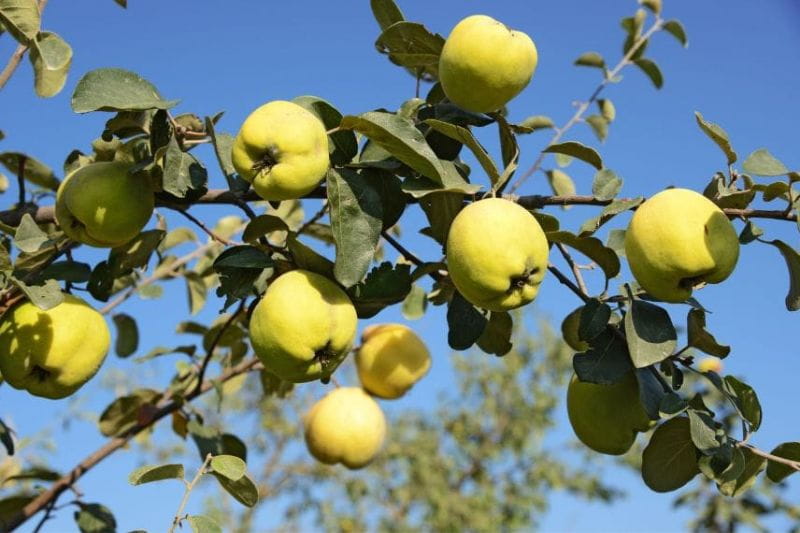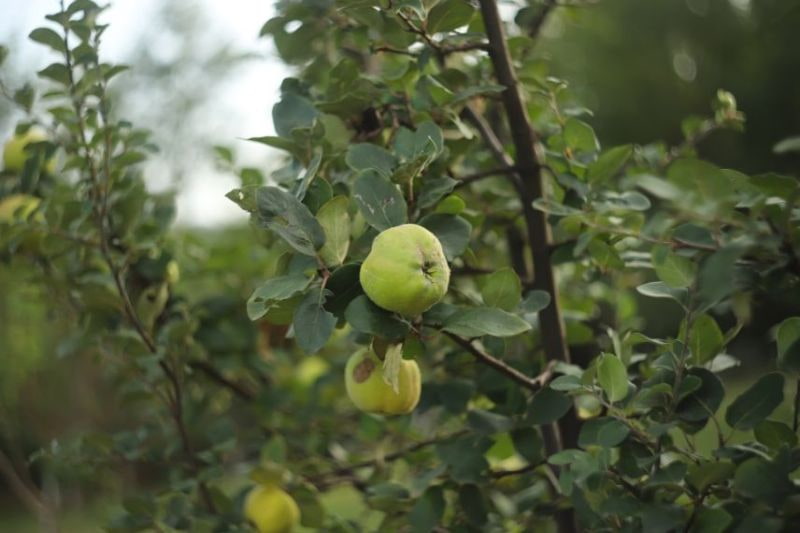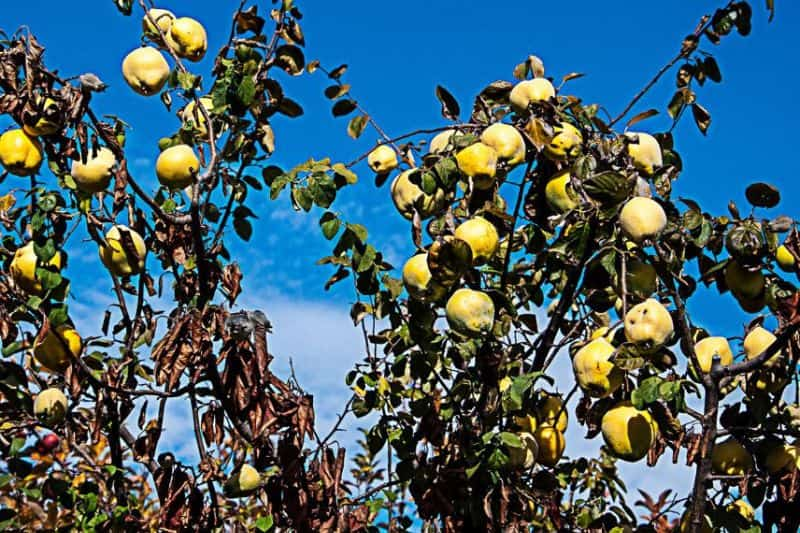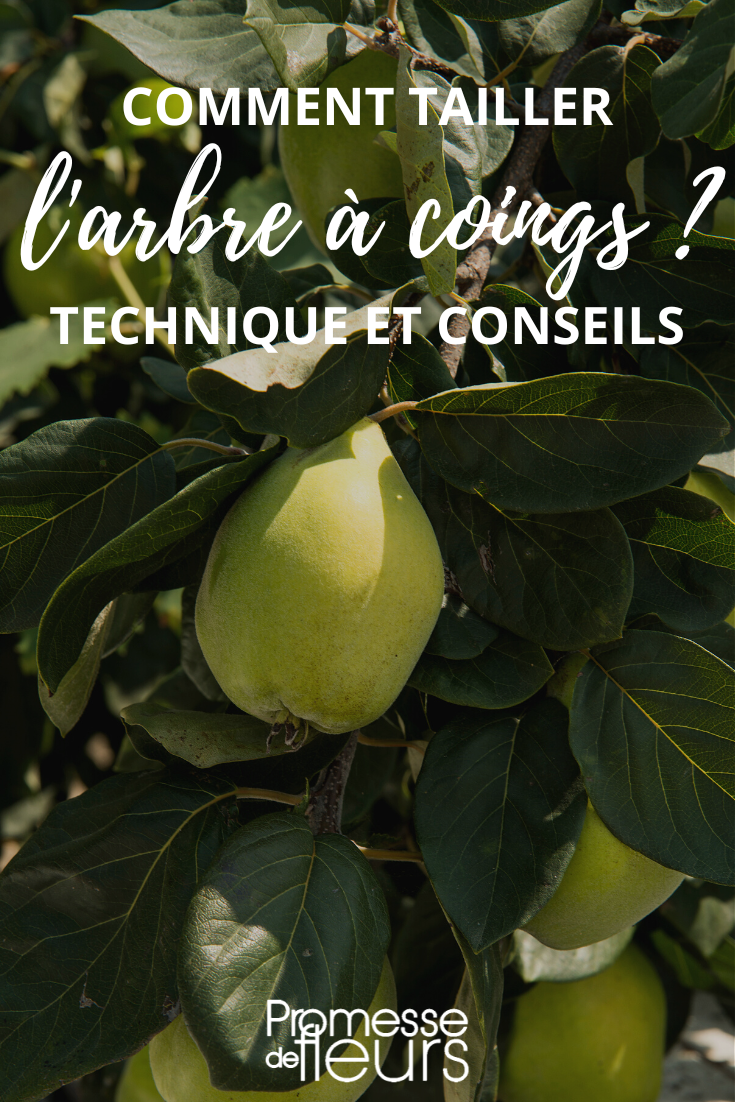Rosaceae-family tree, quince tree (Cydonia oblonga) produces quinces, delightfully scented fruits eaten only cooked, in jams, marmalades, syrups or fruit pastes. By silhouette, flowering and fruiting, it differs from Japanese quince (Chaenomeles speciosa), a very beautiful bush. This tree, which seldom exceeds 4 to 6 m at maturity, often has twisted, spreading branches. That's why pruning, even if optional, helps lighten quince tree silhouette while thereby promoting fruiting.
Discover all our tips to prune quince tree.
To go further: Quince tree: planting, pruning and care

Why pruning a quince tree?
Quince tree is a small fruit tree as it rarely exceeds 6 metres in height, even 8 metres at most. With a twisted, bushy and relatively spreading habit, more arching than upright, it should be pruned to lighten the branches and, above all, try to give it a more upright habit.
Pruning will in fact sanitise, thin out and maintain the branches. Indeed, quince branches tend to tangle, making harvest difficult. Furthermore, if branches are too crowded, fruits have less access to light. Finally, an unpruned quince tree will be more prone to diseases such as powdery mildew, brown rot or entomosporiosis. Pruning therefore has prophylactic virtues.
However, fruiting pruning is not necessary. Unlike many other fruit trees, pruning does not directly affect fruiting. Annual pruning will, however, strengthen tree vigour. And a vigorous fruit tree is a productive tree!
How to prune a young tree?
Naturally, quince tree adopts a goblet form.
- In early years, training pruning will establish the tree structure around three or four main branches. These branches will become the fruit-bearing branches. It is always more aesthetically pleasing to keep an odd number of main branches.
- In the year following planting, therefore choose three or four buds facing outwards and cut at a slant just above them. Make sure the bevel directs water to run away from the bud.
- During the next three years (period when it is not yet fruiting), simply remove inner branches to avoid crossings. The aim will also be to remove lateral branches.

Maintenance pruning of quince trees
This pruning is optional but recommended for tree health. It is not a fruiting pruning intended to improve fruit quantity or quality since quince tree does not really need it. It is, however, an important pruning to improve silhouette, aerate the branches and allow sunlight to penetrate to the centre of the tree.
How to prune?
- Remove old dry or dead shoots to encourage growth of healthy new branches
- Cut overly aged shoots that are of little use
- Eliminate branches growing inwards or those that cross to bring light to the centre of the tree and help fruits ripen
- Spot signs of disease such as cankers and prune at least 10 cm above the scar. Certainly you sacrifice a few buds, but it is for the best! It is the best way to eradicate the problem and prevent it spreading to other shoots and to the fruits

In any case, when thinning and pruning quince tree, keep the straightest branches and avoid altering the natural arching too much. Quince tree naturally tends to bend under weight of fruits.
When to prune?
Quince tree is an easy-to-grow tree, ideal for cottage gardens because of its size, flowering in spring and fruiting between September and November. That is why pruning should be carried out either after fruit harvest, in mid-winter, or at the very start of spring, in February, just before growth resumes.
However, even if this pruning is done in mid or late winter, absolutely avoid periods of frost or snow, and also rainy, humid days.
Similarly, if you miss the pruning period, it is better to do nothing than intervene too late. Even without branch removal, your quince tree will still produce fruit.
Which tools to use?
To carry out pruning of quince tree, a sturdy pruning shear is quite sufficient. It is necessary beforehand to take care to clean then disinfect it with 90 °C alcohol. This will help avoid transmission of diseases from one tree to another. Also, ensure pruning shear is well sharpened to make clean, crisp cuts.
For larger or older branches, a tree pruning saw will certainly be necessary. Again, it should be disinfected.
On each wound, do not hesitate to apply a wound-healing product. A pruning wound is indeed potentially an entry point for disease. Likewise, this healing product also protects tissues from late frosts.
After each pruning, carefully collect all branches, especially those covered with canker, to avoid disease spread. If your local council allows it, burn them. Otherwise, take pruning waste to a waste disposal centre.
































Comments